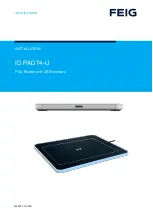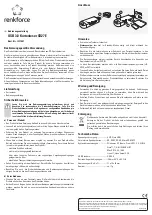
21
S
I
C
K
O
p
t
i
c
-
E
l
e
c
t
r
o
n
i
c
B
a
r
C
o
d
e
S
c
a
n
n
e
r
s
3
S o f t w a r e C o n f i g u r a t i o n s
Multiple Reads
(1-99)
Enter the number of identical reads the scanner must decode (in one reading gate) before transmitting the result to the host
device. This process increases output reliability. The selected scanning frequency and the speed at which the bar code is moving
past the CLV should be considered when making this selection. If the number of multiple reads specified by the user is not ful-
filled, the CLV will send the bar code string or error string (software selectable) to the host along with the error status ST=5, if the
ST value has been placed in the separator.
Transmit Check Digit
A “yes” allows the check digit to be transmitted to the host device. With a “no” response, the check digit is not transmitted.
Note: The CLV automatically truncates the last digit of the data if “no” to transmit check digit is selected.
Decoding Algorithm
(enhanced/standard)
Selecting “enhanced” will direct the CLV to use a 2-step decoding process; “standard” executes a rapid, 1-step decoding process.
CODABAR
An alphanumeric code with the following character set: 10 digits (0 to 9); six special characters; four start/stop characters.
Figure 3-9 Codabar
Code Length
(free/interval/fixed)
The scanner can be programmed to read bar codes of any length or only those of a particular length (entered by the user):
“free”
- Bar codes of any length between 1 and 50 characters will be read.
“interval” - User may enter a range of lengths within which the scanner will read the codes.
“fixed”
- User may program up to five different fixed lengths to be read.
The code length of the printed bar code, including the useful characters plus check digit, can be determined from the number of
wide bars as follows:
(number of bars - 8)
Code Length = –––––––––––––––––––––
4
















































